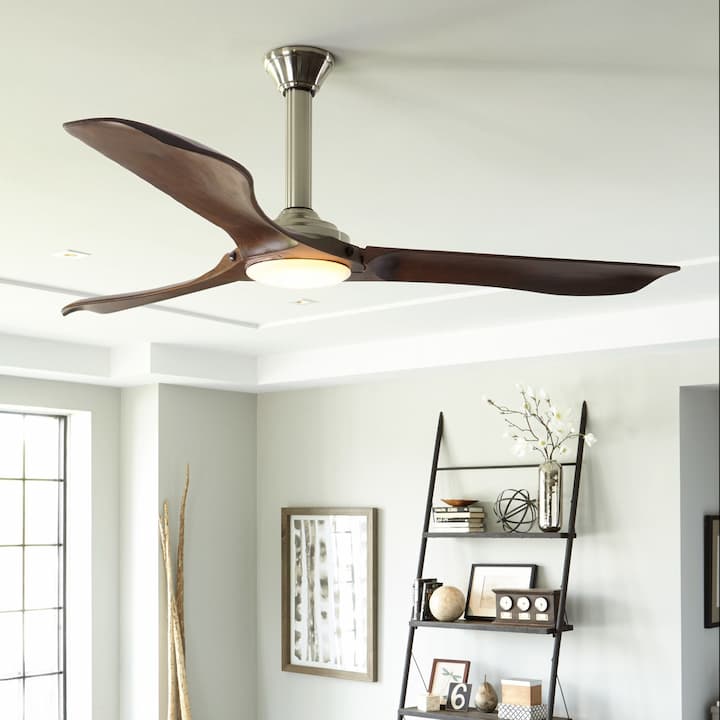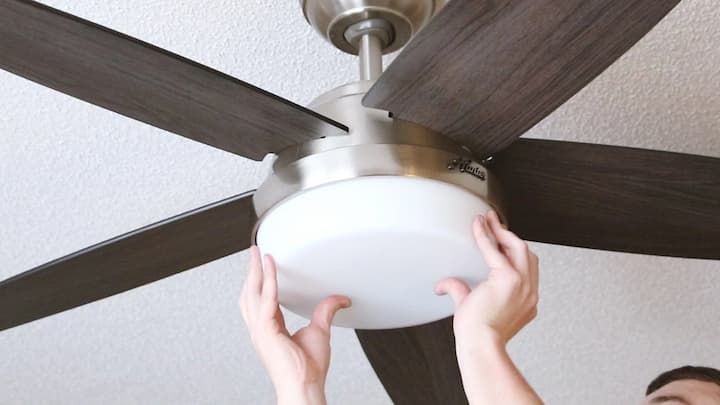The home is a place to relax and unwind, but it can also be an energy drain. It’s easy to feel cooped up in the house all day long, with nothing but work or TV on your mind. Creating a space that you love spending time in is essential for maintaining good mental health and physical wellbeing.
Achieving the ideal decorating result would provide you with the perfect space to spend your life in. It’s more than just picking out colours for the walls. Designing a home is also about choosing fixtures that will make you feel comfortable. Some of the most common elements that get overlooked when decorating a room are practical fans with lights. They provide that much-needed light into a stuffy room, as well as air circulation and ventilation.
The air in your home can’t always be fresh, and without a proper ventilation system the room can get uncomfortable really fast. When designing your space, remember to take into consideration the aesthetics of the room as well as its functionality. Fans are a significant home improvement for adding both atmosphere and freshness to the space!
In addition to the breath of fresh air to your interior or exterior space, they can also help you save money on cooling costs throughout the year. Have you been thinking about sprucing up your area with something new and refreshing? If so, let’s journey together into the world of home improvement with a ceiling fan!
Guide to Fan Lights

The fancy ceiling fans never go out of style when it comes to cooling your home and making it more comfortable. They work by using fan blades to move the air in a circular motion around your room. Air is pulled down from the ceiling level and pushed back up high enough for it to exit near the top of the ceiling again.
The process creates an updraft that draws cooler outside air from any window or door that might be open, then through ceiling vents that lead into other rooms, creating convection currents inside your home. They work the same way for distributing hot air from your heating system during colder months. Since there are multiple styles of fans with lights available, you ought to choose depending on your preferences and the size of the room you’ll be installing them in. The basic types include:
- Standard ceiling fan- This is the most versatile style as it comes in many colours to match the aesthetic of your home. These fans usually come with four or five blades and light fixtures that can be adjusted to your liking. A great perk for these fans is having the chance to customise the fan blades and have them remote-controlled.
- Low-profile fans- To install regular fans, your ceiling needs to be taller than 2.5 meters. But for those with lower ceilings, the market offers you the low-profile design. This style of fan is mounted directly on the mounting bracket with the help of a down rod that keeps it about 2 meters above the floor. Low-profile types are an excellent option for lower set ceilings, but keep in mind that without that clearance between the blades, air movement isn’t the same level as a regular ceiling fan.
- Dual motor ceiling fan- Dual motor fans are great for rooms that have large floor-to-ceiling areas. They work best in public settings and spaces where the character is what you seek, such as an award show or concert hall, but these also make really excellent additions to homes with open layouts because they can move air more efficiently. Their dual-motor mechanism allows you to have complete control over the fan’s speed and even set different modes for the blades.
- Wet or Damp fans- Damp and wet types of fans are made with more industry-grade materials and components in order to endure harsher weather and moisture. They’re most popular for outdoor spaces and areas closer to beaches and water. Their blades and motor are made to resist any water damage and warping from exterior influences.
All these can be ceiling mounted or hung from the top on a rod. Ceiling-mounted fans typically use a motor that is either attached directly to the fan blades or off to one side. The advantage of a ceiling-mounted fan is that it doesn’t require any additional floor space for installation. However, there may not be as much air movement as with the hanging ceiling fans for sale.
The hanging alternative usually has three blades and is mounted by attaching it to a single point in the centre of the room’s ceiling joist, which provides more air movement than when installed flush with the ceiling. Apart from the variety of styles, they come in different materials too, ranging from plastic to wooden and even metal, and choosing the right one depends on where you’re placing it. For instance, wooden and plastic models work better indoors and add a level of sleekness to the room, while metal ones are better for outdoor spaces or industrial buildings.
They are all made sturdy and durable enough to avoid unwanted accidents; therefore, you won’t go wrong with whatever model you choose. It all comes down to personal preference. Budget-wise, the best option of the three would be plastic fans as they are the easiest to make, thus making them accessible to a broader audience.
Benefits of Ceiling Fans

Some may say that fans with lights are outdated and unnecessary, but they improve your home’s comfort for a variety of reasons. Mounted fans have been around since the 19th century, and they continue to be popular today because they can provide benefits that range from being aesthetically pleasing to saving money on your energy bill. Apart from the obvious ones, additional benefits include:
- Better lighting,
- Reduced energy usage,
- Regulation of the temperature of your space,
- Distribution of fresh air throughout your home,
- Elevated aesthetic of the room,
- Lower electricity bills,
- White noise and comfort to you,
- Taken load off your heating and cooling systems.